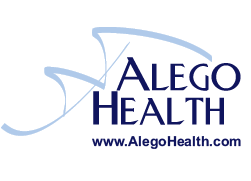16 Jul, 2015 | Rachael Watson | No Comments
The Internet of Healthcare Things Is Here
The Harvard Business Review claims that the Internet of Things (IoT) is emerging as the third wave in the development of the Internet. The first phase, the fixed phase, began in the 1990s and connected one billion users via PCs, followed by the second phase where the mobile Internet of the 2000s connected two billion users via smartphones (on its way to 6 billion). The IoT is expected to connect 28 billion “things” to the Internet by 2020, ranging from wearable devices, such as smartwatches to automobiles, appliances and industrial equipment, and the repercussions span industries and regions, the magazine reports.
In healthcare, IoT when used for healthcare may be able to help those with chronic conditions, and could have an economic impact of more than $170 billion to $1.7 trillion a year, according to a recent report from McKinsey & Company.
By 2025, the report estimates that the IoT will have a “total potential economic impact” of almost $4 trillion up to a possible $11.1 trillion per year. That healthcare figure is based on “cost savings in treatment and the value of longer lives and improved quality of life that patients with chronic conditions could enjoy if IoT monitoring helps them avoid disease complications,” the report adds, FierceHealthIT reports.
However, the challenges of health IoT will remain, most notably a lack of interoperability between systems and devices. This will require coordination of technology, capital investment cycles, provider organization and more, the McKinsey report says. According to the site, the healthcare industry must make changes for IoT to have full impact that includes payers realizing investments in IoT is justified; patient acceptance of wellness and health devices must grow; and privacy and security must be addressed. Finally, the supply of the technology will have to continue to innovate, and business users will have to make investments in both technology and the culture and structure. Policymakers also will need to ensure the safety of devices, if they can, which may be a bit of a problem, honestly, given interest in such development by hacks.
The movement is too big to ignore for those in healthcare and given the current level of investment in stationary and wearable and smart devices, there will be much movement and desire to see this market move forward in the most efficient manner. Research firm Gartner says that the current 4.9 billion connected “things” in 2015 will expand to 25 billion by 2020, so there’s even a swing in the estimate in the number of products that will be connected to the web. But this movement is bigger than refrigerators telling us that we’re out of milk. The IoT is going to be bigger and more profound in its changes to the world we live in; healthcare will never be the same.
At its peak, ICD-10, 510, meaningful use and electronic health records combined will likely pale in comparison to what we’re about to see in the IoT of things, especially in relation the care provided. To be sure, the conversations we’re having now about what’s seen some very cutting edge issues will be likely primitive in comparison in the very near future. For example, personalized sensors will record health parameters, minimizing the need for direct patient-physician interaction by providing continuous data throughout activities of daily living.
The Internet of Healthcare Things matters because it changes the way we see, save, sample, select and search data. Now you can get continuous sampling of your health and relay that data to where somebody can actually interpret that data, every second of the day, every day of the year for our lifetimes, from the cradle to the grave.
And the scary thing, or the inspiring thing, is that these capabilities exist today, now. The Internet of Things is very real and alive, especially in healthcare.

Write Reviews
Leave a Comment
No Comments & Reviews